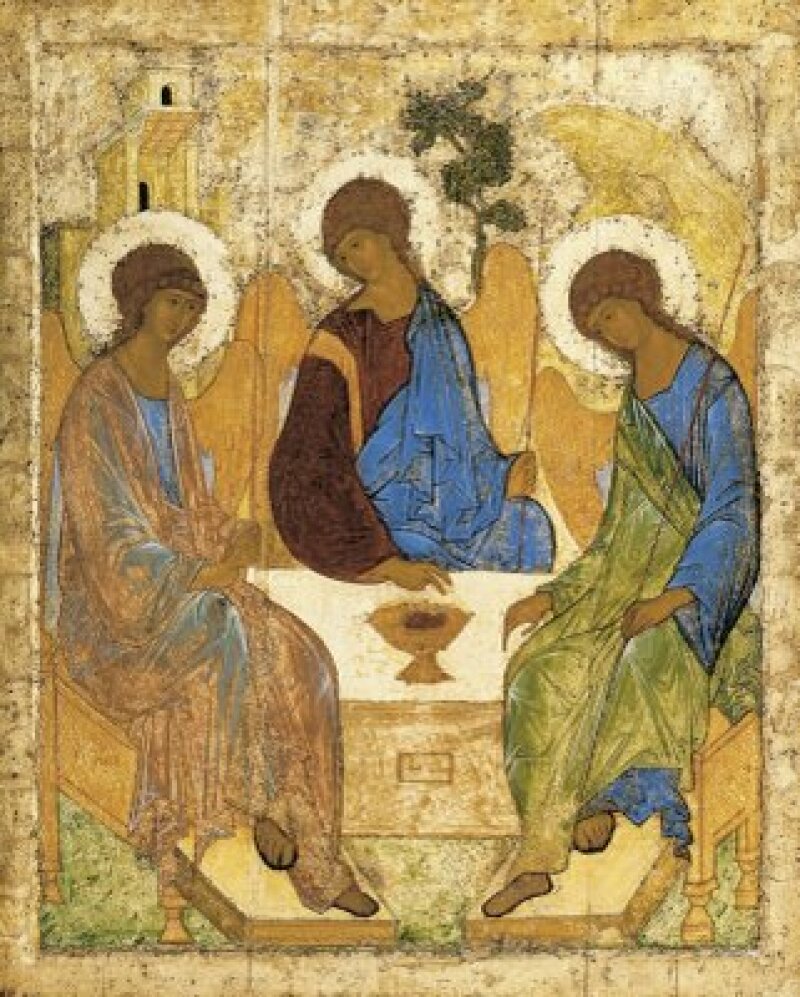
THE ICON OF THE HOLY TRINITY
adapted from Kairos2.com, posted March, 2008
06/06/2022
The Icon of the Holy Trinity was painted in 1425 by a Russian monk, Andrei Rublev, based on the story in Genesis 18,

The three angels represent the three persons of the Trinity. Although their heads are tilted at different angles towards one another, their faces are identical, and each holds a staff suggesting they possess equal authority.
Each figure wears blue, showing their oneness, yet they also have different colored garments showing their distinctiveness. Their faces, bent towards one another show their love for one another while their gleaming eyes show their enjoyment. A silent intimate conversation seems to be going on.
The central focus of the icon seems to be the chalice which contains a lamb sitting at the center of the table. The central figure, who is the Son, points with two fingers directly to the lamb, acknowledging his mission of being "the Lamb of God who takes away the sin of the world" (John 1:29).
The hand of the Father, the figure on the left, is raised in blessing over the chalice, thus encouraging the Son in his work. The Holy Spirit, the figure on the right, is pointing to a rectangular opening in front of the table which signifies the world. The Son comes and offers himself for the world; through the Holy Spirit the world is brought to the Son and the Father.
Henri Nouwen comments, "we come to experience a gentle invitation to participate in the intimate conversation that is taking place among the three angels and to join them around the table. The movement from the Father towards the Son and the movement of both Son and Spirit towards the Father becomes the movement in which the one who prays is lifted up and held secure."
Rublev's icon beckons us to enter the circle of love, the divine life of the blessed Trinity.
- from Kairos2.com, posted March, 2008.
-
